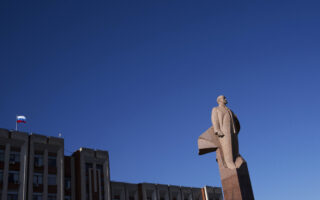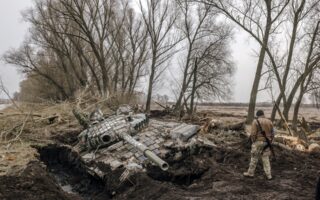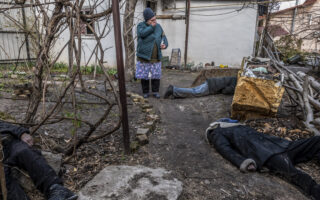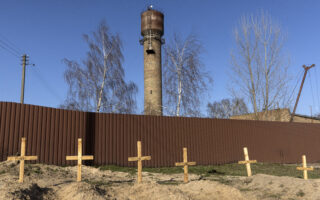Dire injuries and not enough doctors in Ukraine
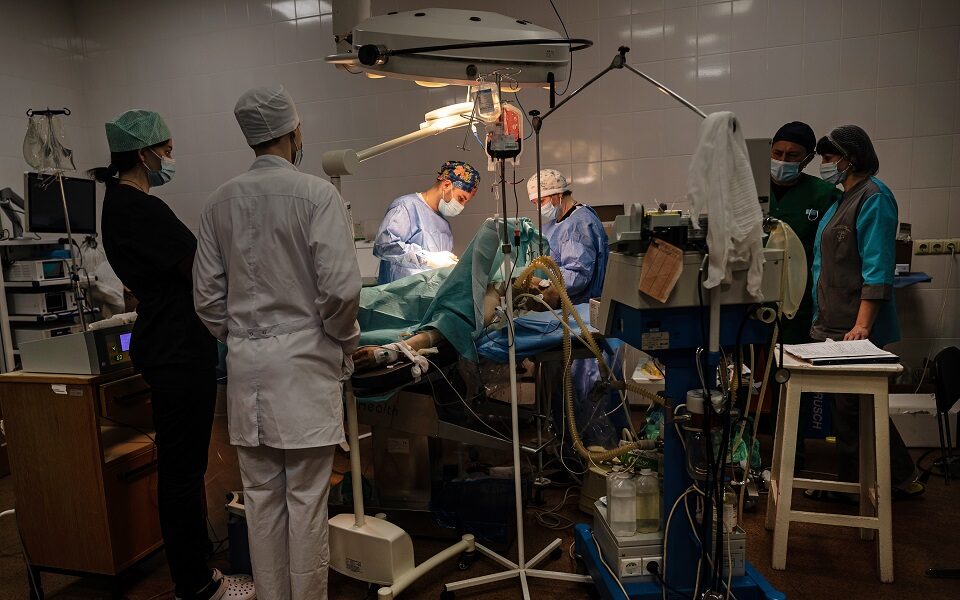
Days after Russian forces invaded, Yaroslav Bohak, a young cardiovascular surgeon, was at home with his family in the relative safety of western Ukraine when a colleague placed a desperate call from the east, pleading with him to come help.
Many doctors had fled the fighting, his friend said, and conditions at the hospital resembled a bygone era of warfare, with the surgeons who remained amputating limbs, instead of trying to repair them, to save grievously wounded soldiers.
“He called me and said he could no longer cut off the arms of young people,” Bohak said, as he stood in an operating room of a hospital in Kramatorsk. “When I came here, I had surgery on the first day.”
As Russian forces pummel eastern Ukraine with a mix of artillery, airstrikes and rocket attacks, front-line hospitals, many of them in poorer, rural areas, have become overwhelmed. They are severely short-staffed or have been abandoned completely, as doctors and nurses have fled the violence.
All day long, the walls of the hospital shake with the thunder of battles raging near Kramatorsk, an industrial city in the Donbas region, where Russian forces have been waging a bloody offensive. A steady stream of ambulances arrives at the sandbag-reinforced emergency room, ferrying soldiers and civilians, many with life-threatening wounds.
But the hospital is staffed by a skeleton crew. Only two of its 10 doctors remain, aided by six nurses working 24-hour shifts with one day off for rest, said Tatyana Bakaeva, the senior nurse. (Hospital officials asked that its name not be published for security reasons.)
“Only the most stoic remain,” Bakaeva said. “People are scared. What can you do?”
It is a similar story throughout the Donbas: As the toll of wounded mounts, the need for more doctors and nurses becomes even more acute.
In Avdiivka, right on the front lines, the lone remaining surgeon and the hospital medical director described spending months in the emergency room, never leaving except for quick dashes to the grocery store amid shelling. In Sloviansk, a city just to the north of Kramatorsk where plumes of smoke from battle can be seen on the horizon, only about one-third of the hospital staff remains.
The city of Bakhmut sits at a crossroads between Russian forces pushing from the east and the north. There, ambulances jam a small courtyard of the military hospital, and the emergency room is almost always full.
“Nobody ever prepares for war, and this region is not so densely populated to be able to deal with this many wounded,” said Svitlana Druzenko, who coordinates emergency evacuations of wounded soldiers and civilians from the battle zones. “The wounds are the same for civilians and soldiers because rockets do not choose where to fall.”
Many of the wounded from the east are brought to Dnipro, a city of 1 million that has six big hospitals. But it is four hours’ drive from many front-line positions. And the hospitals there have also been depleted of nursing staff, said Dr. Pavlo Badiul, a surgeon at the Burn and Plastic Surgery Center in Dnipro.
The center was full to capacity with war wounded and staff were working continuously without a break, he said.
A member of the American Society of Plastic Surgeons, after training in California, Badiul put out an appeal through the society’s newsletter for equipment and medical supplies. “Although we get some targeted aid, much is still lost, diverted or taken to the wrong place,’’ he said.
Volunteers have pitched in to pick up some of the slack. Druzenko works for a volunteer emergency medical organization known by its Ukrainian initials PDMSh. Its ambulances and personnel are ubiquitous at hospitals and at so-called yellow zone transfer points, locations on the edge of the battlefield where wounded soldiers are picked up by ambulances and rushed to the nearest hospital.
It is dangerous work. Last week, a yellow zone base that Druzenko’s organization established north of Bakhmut was bombed by Russian forces.
“Not only drones, but aviation is working in that area,” Druzenko said.
Most of the surgeons operating out of the hospital in Kramatorsk, including Bohak, are volunteers. Since he arrived, the hospital has had almost no amputations.
Bohak showed off cellphone videos of his surgeries last week. Digging into singed and shredded flesh, he extracted severed arteries and painstakingly stitched them back together, restoring circulation to the damaged limbs, allowing them and the soldiers they are attached to be saved.
“The nearest serious clinic is in Dnipro, which is 280 kilometers from here,” he said. “It takes time to get there, and it may be too late to save the limb. That’s why my arrival was very important.”
Not all the limbs can be saved though. Eduard Antanovskyy, deputy commander of the military unit at the hospital, said that recently a Russian soldier was brought in with a serious leg wound. While at the hospital, he said, the soldier was provided with security guards for protection.
“We had to take the leg because the tourniquet was on for too long,” he said. “Even if we wanted to, we couldn’t have saved his leg. We treated him humanely, not the way he deserved to be treated.”
Despite months of warnings from the White House and others that Russia was planning to invade, many in Ukraine, including much of the political establishment and even some in the military, refused to believe it. When Russian rockets began to hit Ukrainian cities Feb. 24, it set off a scramble. Hospitals, in particular, were unprepared to handle the sudden surge in patients with vicious and difficult wounds that war inflicts.
In the first week, Dr. Maksim Kozhemyaka, a civilian trauma surgeon, volunteered to assist at the military hospital in Zaporizhzhia, one of the main hubs treating soldiers in eastern and southern Ukraine. Almost immediately, he said, the hospital was inundated with 30 to 40 patients a day and did not have sufficient supplies to handle gunshot wounds or other grievous injuries.
“We didn’t believe that this could happen because we understood that in any case there would be huge losses on their side as well,” Kozhemyaka said in the hospital’s emergency room. “And of course, we thought that no rational leader of a country would do this.”
For the hospital workers persisting through the grim routine, the losses can feel personal, and are sometimes deeply so.
One recent morning, ambulances raced up to the small hospital in Sloviansk carrying soldiers wounded in an airstrike just a few miles up the road. One of them carried the battered body of Ihor Ihoryuk, 33, the only child of the hospital’s head nurse. Much of the hospital staff had known him since he was a boy.
The force of the explosion, outside a room in a seed factory where he and his comrades were sleeping, had ripped off his arm, and his blood spilled onto the asphalt in front of the hospital as he was raced inside.
A few hours later, a nurse named Anna emerged from the hospital, her green eyeliner running down her face. Ihor could not be saved, she said.
“He grew up in front of our eyes,” she said, fighting back the tears.
She was holding a box containing Ihor’s black army boots. “He won’t be needing them anymore,” she said.
She took them to a spot a short distance from the hospital entrance and set them next to a pair of black tennis shoes that were soaked with blood. They belonged to a soldier who was killed the day before.
This article originally appeared in The New York Times.

